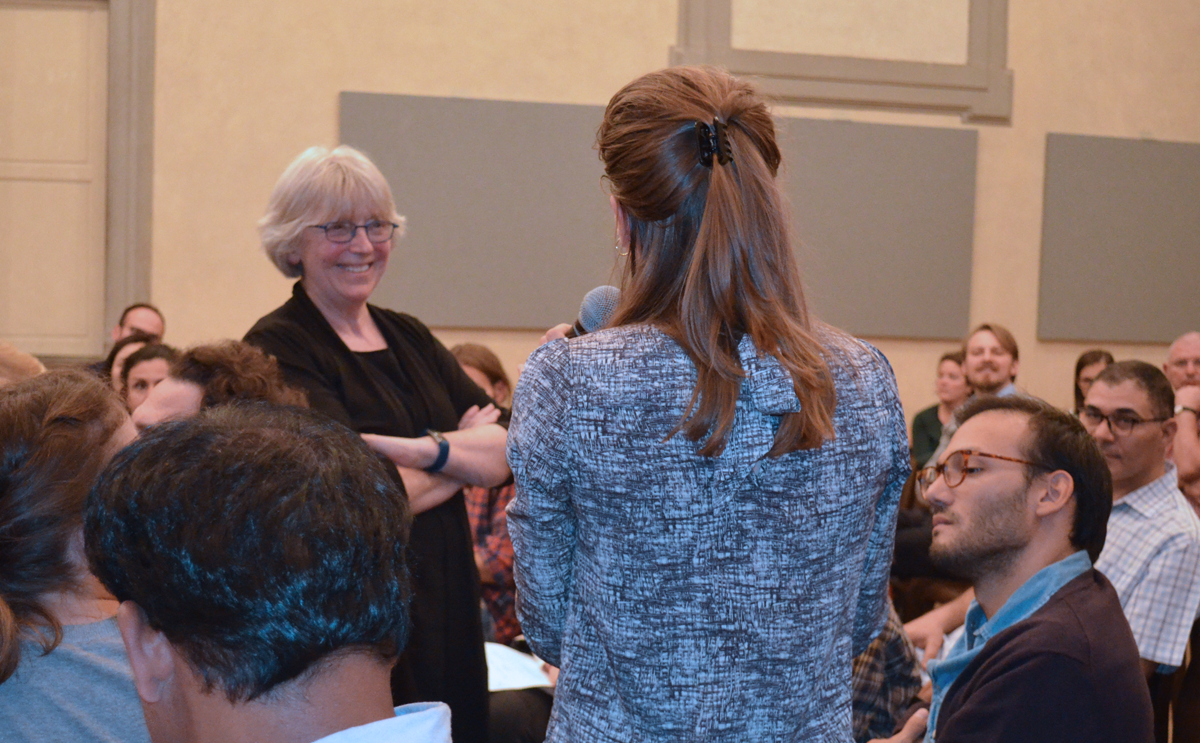Posted on 18 October 2019
In her Max Weber Lecture at the European University Institute professor Valerie J. Bunce of Cornell University discussed the United States' and Russia’s intervention in each other’s elections – and said American efforts to promote democracy have produced paradoxical results.
“Democracy promotion can promote authoritarianism, not democracy” - Professor Valerie J. Bunce’s theory might seem paradoxical, but it’s the result of years analysing the United States’ push for democracy in post-Soviet countries.
Speaking at the European University Institute as part of the Max Weber lecture series, the Cornell University professor acknowledges that it is not a commonly shared view.
Her research has mainly focused on the Color Revolution, a set of cross-national electoral results that saw the fall of Russian-backed authoritarian leaders.
Starting with the 1998 Slovakian elections, the Color Revolution spread to other post-Communist countries such as Croatia, Serbia, Georgia and the Ukraine in 2014, weakening Russia’s hold on the region. Crucially, the United States had operated behind the scenes to favour anti-authoritarian regimes, provoking Russian president Vladimir Putin to ramp up efforts to weaken Western democracies.
Despite years of experience, Professor Bunce said she did not immediately spot the connection between Color Revolutions and the strengthening of authoritarian leadership in neighbouring countries. Speaking after her talk, she said that there is a ‘need to be quite empirical to see the connection’, something made possible by the wealth of data in post-Soviet countries.
She first spotted this dynamic whilst studying Azerbaijan, where leaders became increasingly oppressive to stave off a potential domestic Color Revolution.

Valerie J. Bunce taking questions following her 16 October Max Weber Lecture
A crucial element in Russia’s counter-offensive was propaganda.
The threat posed to the Russian regime, state and international stability prompted the 2014 military conference in Moscow, where Russia’s top officials put forth a bizarre theory: every challenge to authoritarian regimes in the world since 1989 could be traced back to the United States. The far-fetched theory attributes a grand total of 75 Color Revolutions to the United States.
The conference’s suggested response was to increase attacks on Western democracies, through a combination of cyberattacks, fake news and boosting Russia-friendly candidates.
What is surprising is the content of the propaganda itself. Old Soviet campaigns about race relations in the United States were revived - giving a new lease of life to ‘“unbelievable’’ stories about ethnic minorities. Youtube also played an often overlooked role: Russian propaganda agents went as far as hiring Nigerian actors to star in brief videos were they pretended to be African Americans.
In a letter sent to fellow U.S. Deputy Security Adviser Micheal Flynn, K.T. MacFarland warned that in case of a ‘tit-for-tat escalation (in U.S. Russian relations), Trump will have difficulties in improving relations with Russia, which has just thrown USA elections to him.” The result has become a permanent fixture of history books and academic debates alike: the ongoing conflict in the Ukraine, the Russian interference in U.S. elections, and the Muller report. What remains to be seen is how elections will evolve over time, as this tit-for-tat war has made elections an increasingly international issue.